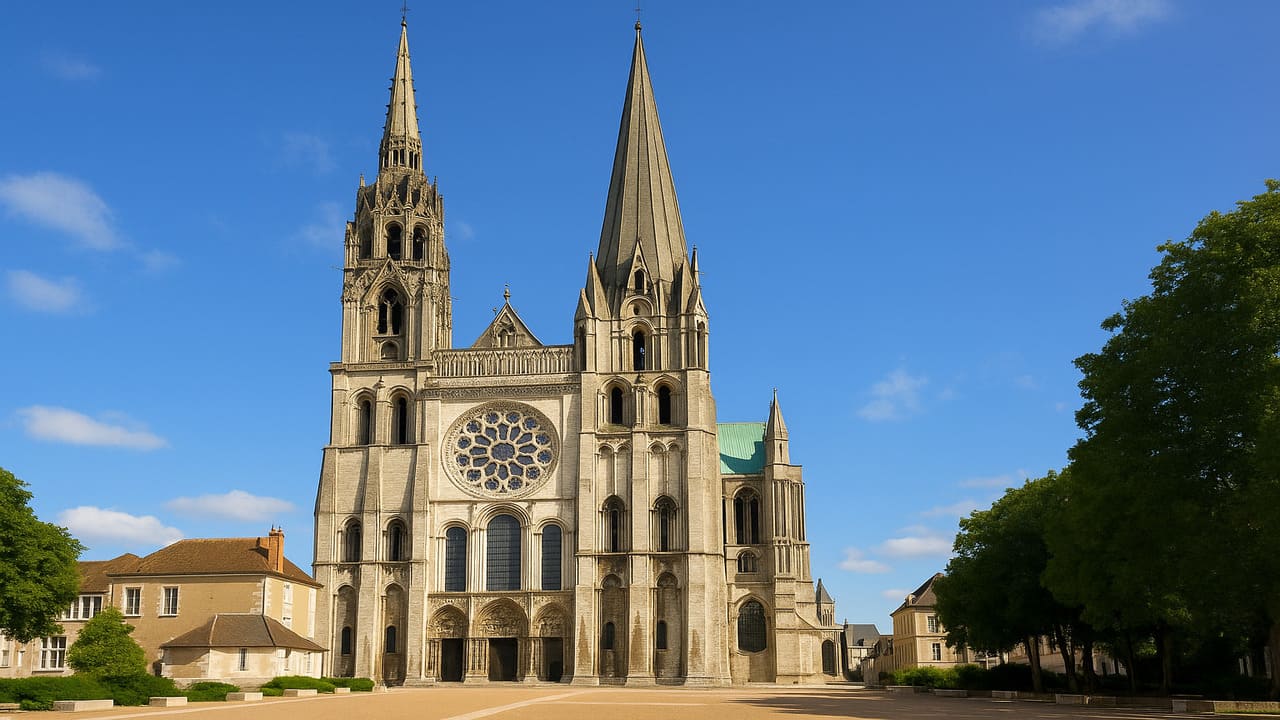
Thorn Ville Church – Standing majestically in the town of Chartres, France, the Chartres Cathedral (Cathédrale Notre-Dame de Chartres) is one of the most celebrated examples of Gothic architecture in the world. Built primarily between 1194 and 1250, it has remained remarkably well-preserved for over eight centuries, making it a living testament to medieval craftsmanship and religious devotion.
The cathedral’s prominence is not only due to its architectural beauty but also its historical and spiritual significance. Recognized as a UNESCO World Heritage Site in 1979, it attracts visitors from around the globe, from art historians and architects to pilgrims seeking a deeper connection to their faith.
The structure of Chartres Cathedral is a marvel of medieval engineering. Its soaring pointed arches, ribbed vaults, and flying buttresses are textbook examples of Gothic style. These features allowed the builders to create a higher and more luminous interior than earlier Romanesque churches.
One of the most striking elements is the cathedral’s façade, adorned with intricate sculptures depicting biblical stories and saints. The famous Royal Portal on the west front features statues that represent kings and queens of the Old Testament, symbolizing the connection between divine and earthly authority.
Read More : Qasr Ibrim Church: Echoes of Early Christianity in Nubia
Chartres Cathedral is celebrated for many aspects, but three features in particular have elevated its status as a masterpiece of medieval art and devotion:
Since the Middle Ages, Chartres Cathedral has been a significant pilgrimage destination. Pilgrims traveled from across Europe to venerate the Sancta Camisia and to seek blessings. The cathedral was a crucial stop on the pilgrimage routes that led to Santiago de Compostela in Spain.
Today, the spiritual atmosphere remains palpable. Visitors still light candles, kneel in prayer, and participate in special services held within the vast stone walls. The blending of sacred tradition and artistic beauty creates a profound experience for both the faithful and secular admirers.
Also Read : E-Commerce Regulatory Hurdle: Navigating Data Security
One of the most remarkable aspects of Chartres Cathedral is how well it has withstood the test of time. Despite wars, revolutions, and natural disasters, the structure has remained largely intact. Restoration projects over the centuries have focused on preserving its original elements while ensuring the safety of the building for future generations.
In recent years, conservation efforts have included cleaning centuries of soot from the stone walls and carefully restoring stained glass panels. These projects have sparked debate among historians and locals about how much restoration is too much, but the results have undeniably enhanced the cathedral’s luminosity and detail.
A trip to Chartres is more than just an architectural tour it’s an immersion into history, art, and spirituality. The cathedral sits at the heart of the town, surrounded by quaint streets, cafes, and shops that add to the charm of the visit.
Guided tours provide deeper insights into the symbolism embedded in the sculptures and glass, while the view from the cathedral towers offers breathtaking panoramas of the French countryside. Special events, such as light shows that illuminate the façade at night, offer a modern way to appreciate this ancient treasure.
Thornville Church - Your Source for Biblical Inspiration - Several of the oldest Christian churches standing today still host regular…
Thornville Church - Your Source for Biblical Inspiration - King Solomon’s famous prayer in 1 Kings 3 highlights the priority…
Thornville Church - Your Source for Biblical Inspiration - Sacred art in churches became a visual language that shaped early…
Thornville Church - Your Source for Biblical Inspiration - Across changing empires and cultures, historic churches preserved Christian teachings with…
Thornville Church - Your Source for Biblical Inspiration - The miracle of spiritual deliverance appeared in Philippi when Paul freed…
Thornville Church - Your Source for Biblical Inspiration - Historians now highlight how women in early church shaped theology, leadership,…